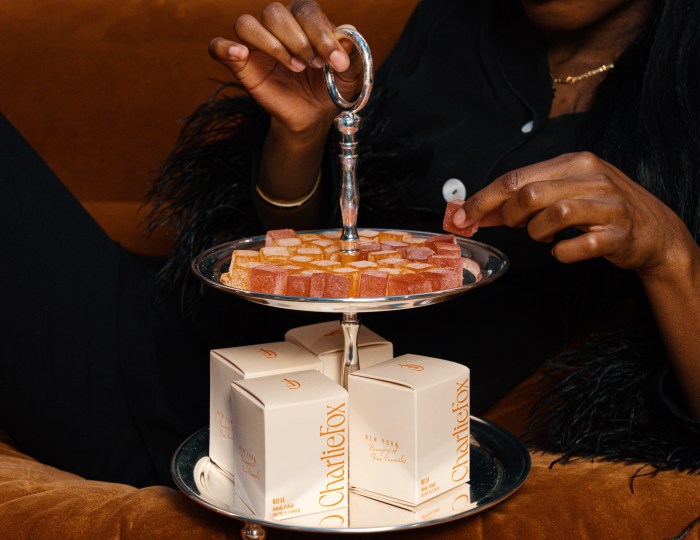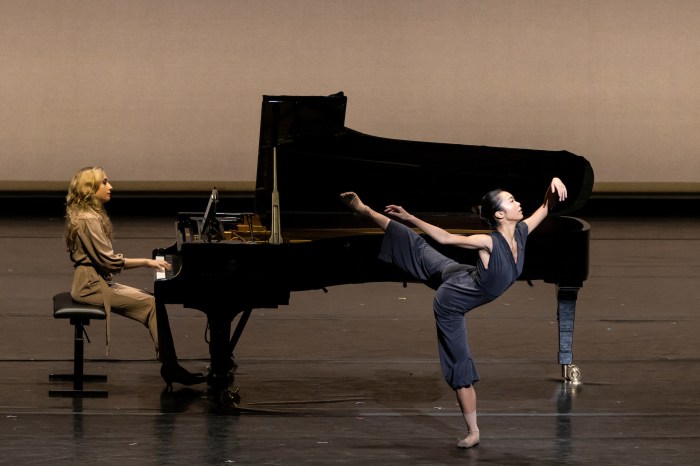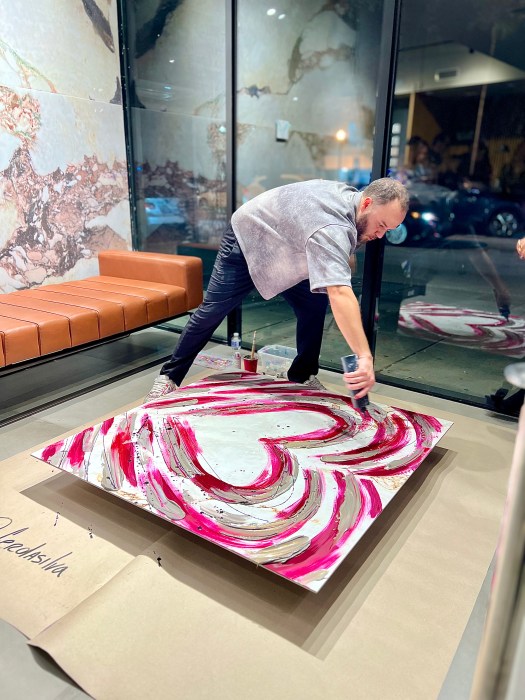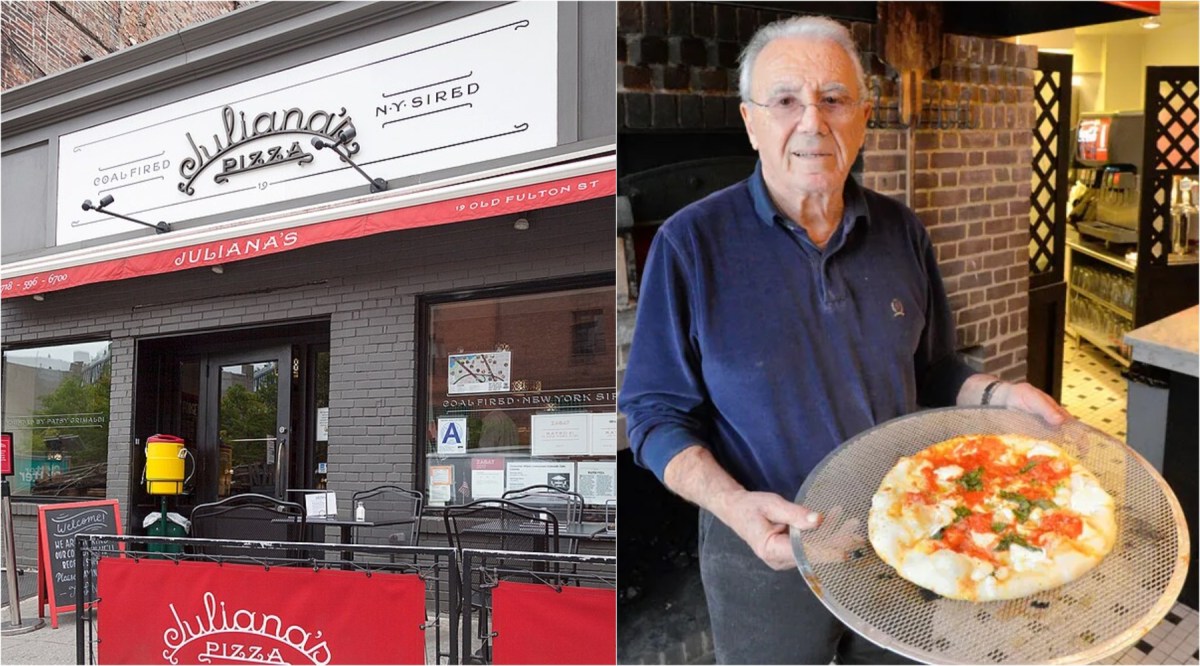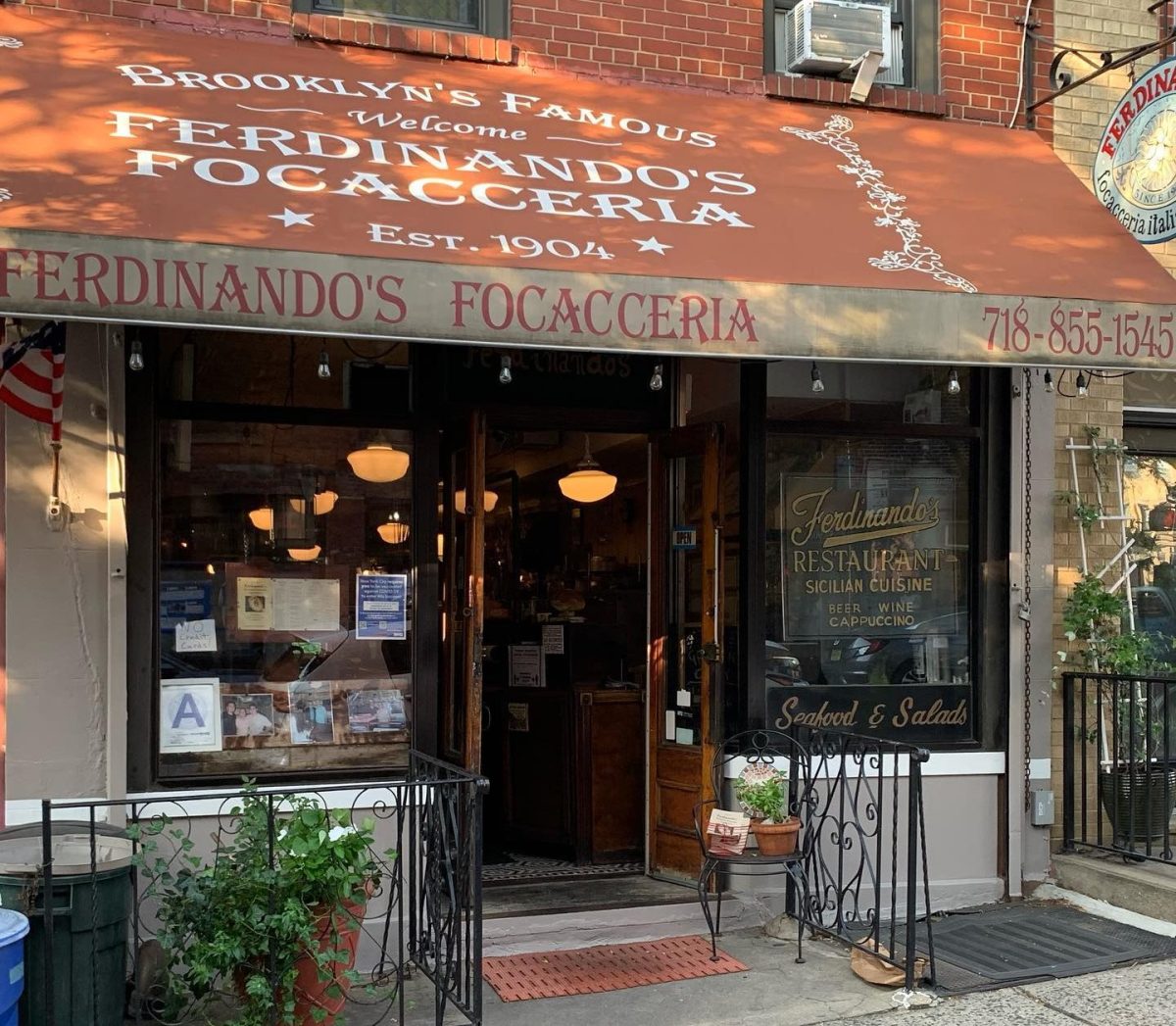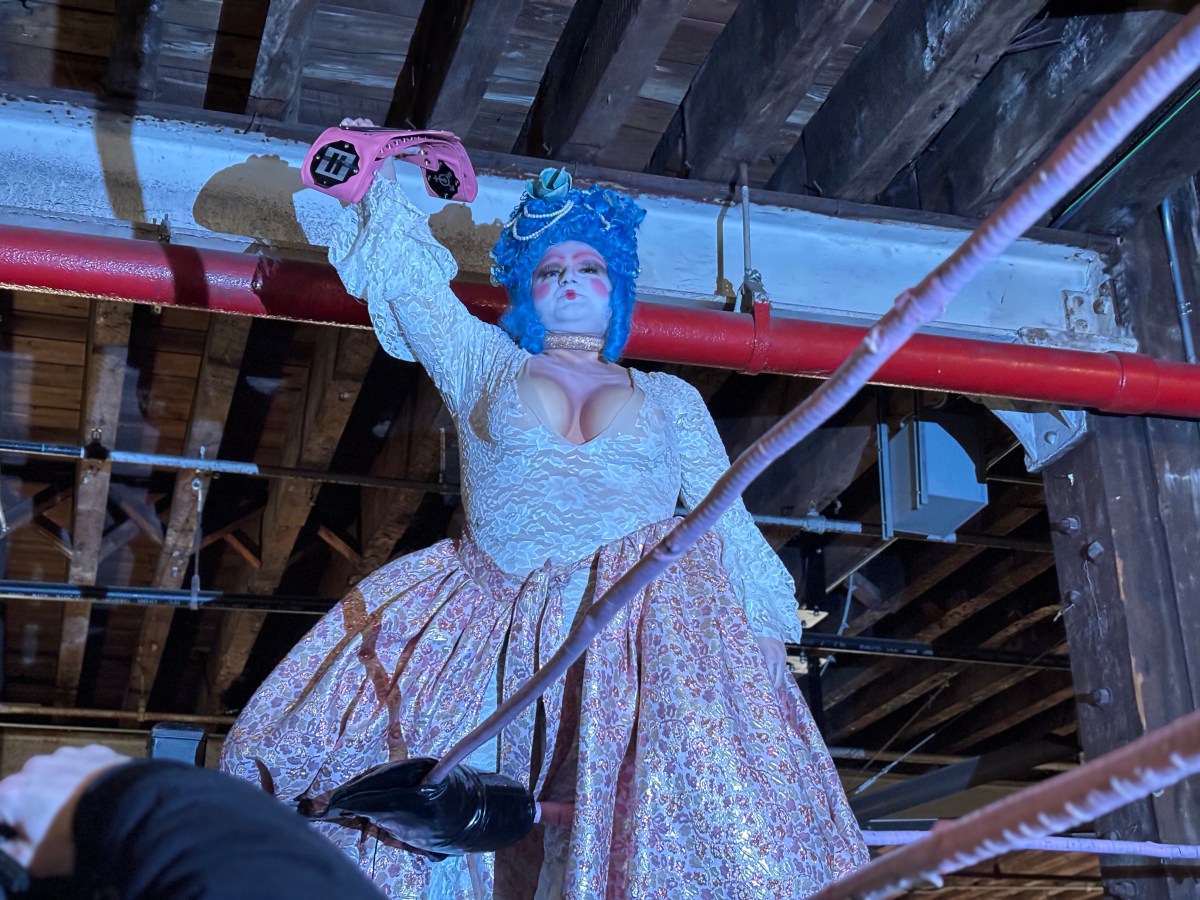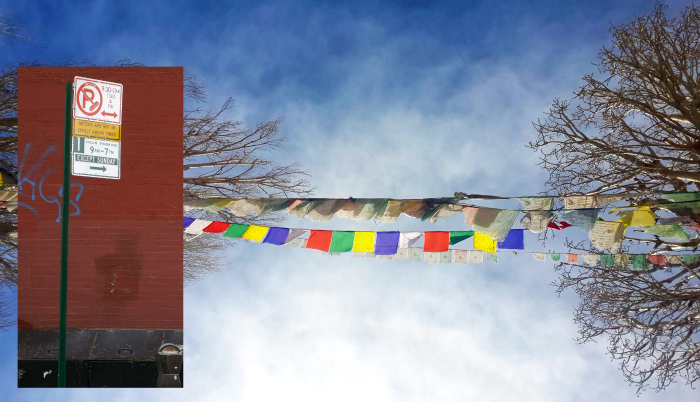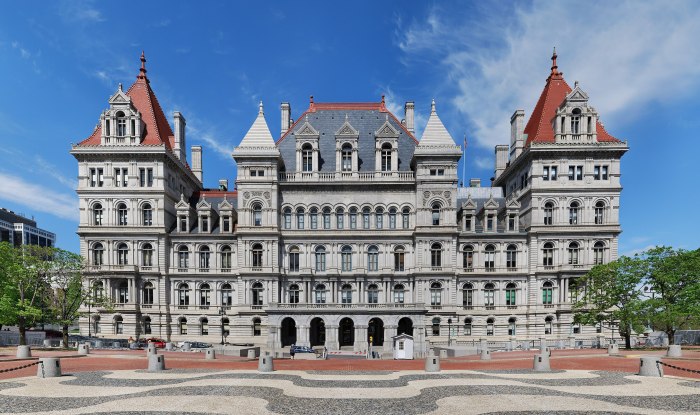By Bonnie Rosenstock
If the names Maurice Schwartz, Menasha Skolnick, Joseph Buloff, Seymour Rexite and Miriam Kressyn don’t ring a bell, you are far from alone. But for members of the aptly named Yiddish Artists and Friends Actors Club, these legendary performers are household names. And their memories are being kept alive in anecdote, song and in dusty portraits and scenes from performances lining YAFAC’s walls, a virtual who’s who of Yiddish theater.
YAFAC was established in 1936 in the heyday of Yiddish theater, explained its current president Corey (Gedalye) Breir. The organization rents the second floor of the historic four-story building at 31 E. Seventh St., owned by the Hebrew Actors Union, as the carving on the stone facade and plaque over the entranceway attest, in what was once the heart of the Second Ave. Yiddish theater district. Founded in 1899, H.A.U. was the first theatrical union in the United States, and its members included the most famous performers of the Yiddish stage. After the death of its last president, actor-singer Rexite, in 2002, the Associated Actors and Artistes of America decertified the union for lack of membership. In 2006, H.A.U.’s collection — the world’s largest — of original material on Yiddish theater, including letters, theater posters, manuscripts and other priceless artifacts, was donated to the YIVO Institute for Jewish Research, at 15 W. 16th St. YIVO’s exhibit of the materials, “Stars, Strikes and the Yiddish Stage: The Story of the Hebrew Actors’ Union, 1899-2005,” will run until Sept. 30.
YAFAC served as a restaurant and hangout for Yiddish actors and backstage professionals, seven days a week. As the theaters closed down, especially after the 1950s, it became more of a once-a-month gathering place for singers or actors to perform for their friends. YAFAC still maintains this tradition of performance, “mame-loshn” (mother tongue) and meal, except now these events take place four times a year — for Rosh Hashanah, Hanukkah, Passover and the closing meeting of the board of directors in June; a birthday and the occasional memorial for a Yiddish actor who has passed on may also be celebrated. Also, in September there is an annual memorial for Yiddish actors at Mt. Hebron Cemetery in Flushing.
Brier, 53, who commutes from Miami Beach to produce the events, grew up in Flushing and is fluent in Yiddish, which he learned at Queens College, thanks to the influence of his grandfather from Minsk.
“Because of how small Yiddish theater has become,” Brier said, “it’s much more friends of Yiddish theater who attend and fewer actors or singers.”
In 1915, when Folksbiene (“People’s Stage”) was formed, there were 14 Yiddish theaters on the Lower East Side. Through the 1940s and 1950s, that number had dwindled to five on Second Ave., and one on Rivington St., explained longtime East Villager Herb Latner, former child actor from ages 7 to 18, who performed during the tail end of the ’50s. What caused Yiddish theater to die out? Latner answered the question with a question: “What happened to Yiddish culture in general? Restrictive immigration laws in the 1920s, World War II, the Holocaust, Communism, the discontinuance of immigrants, tremendous assimilation,” he explained. “Even in the 1960s and ’70s, there was a smidgen of events after the Hungarian Revolution. It died in steps.”
But somehow it always resuscitated. At present, there are two Yiddish-language theater companies in New York City. The Folksbiene Yiddish Theater, the longest continuously performing Yiddish theatrical institution in the world, is located at the Jewish Community Center, 334 Amsterdam Ave. at 76th St. The other is the New Yiddish Rep, housed at the Workman’s Circle, 45 E. 33rd St.
Because of these two vital institutions, it’s not just old folks reminiscing about the past who go to the YAFAC festivities these days. In the last few years a lot of younger people are professing interest, “as crazy as that might seem,” Brier said. “I never thought it would happen. We’re having grandchildren and especially great-grandchildren of immigrants at the turn of the century who have found that Yiddish is their connection to ‘Yiddishkeit,’ the language and culture, and they are performing in Yiddish theater. My contemporaries thought we were the last of the Mohicans, and now we see a whole new generation coming up who will eventually take over the organization, and we’re thrilled about it.”
One such 20- or 30-something is Amanda (Miryem-Khaye) Seigel, who performs with the touring Folksbiene Troupe, which travels Upstate and through parts of the Northeast. She didn’t grow up speaking Yiddish, but like many of her contemporaries, she studied it as a young adult. Last September her group performed at YAFAC.
“They told us they didn’t like our costumes, we looked like schlumps. Not subtle advice,” she recounted.
Despite the constructive criticism, Siegel, a board member, said she always has a great time.
“It’s a historic place filled with old books, pictures and busts of famous people,” she said. “I love soaking up the atmosphere.”
When Brier first became president some 20 years ago, there were about 40 to 50 people for an event. At the recent cultural Passover Seder in April held at the Workman’s Circle, more than 120 people attended, including Fyvush Finkel, 85, who at age 43 made the transition to the American stage. Most of the events, however, take place at YAFAC, even though the two steep flights of stairs are increasingly difficult for some of the older members to navigate.
“But younger people insist,” said Brier. “They love the feeling of Seventh St. The entire history of Yiddish history is on the walls. It’s an inspiration for them to look at the pictures of the actors who came before them. It wouldn’t have ‘hameshkeit,’ the warmth, of the meeting hall if we did it in a different place.”
Yiddish is the first language for Brooklyn-born actress-singer-dancer-choreographer-playwright Eleanor Reissa, who belted out a rousing medley of Yiddish favorites at December’s Hanukkah dinner party. (Her parents are Holocaust survivors.) Reissa was also nominated for a best director Tony for “Those Were the Days,” an English-Yiddish revue, in 1990, and was co-artistic director of Folksbiene.
David Romeo, producer of Yiddish theater, called Reissa the greatest exponent of modern Yiddish singing.
“The ghosts of ‘Yiddishlang’ [Yiddish language] are here,” he said, referring to YAFAC.
Reissa added, “This is a great hall for people to come together and let a language live, not just in nostalgia but in reality, with people who converse and understand. The culture is rich, lush, funny and moving, and we have a chance to experience it in this organization.”
The Hanukkah celebration was attended by nearly 100 people of all ages, from teens to well up there. One of the most revered attendees was Mina Bern, YAFAC’s vice president and doyenne of Yiddish theater. Bern, 89, famous in her native Poland, Russia, Israel at its founding and New York, where she has lived since 1949, was performing up until a few years ago. In 1999, she won an Obie for her star turn in the Folksbiene production of “Sweet Dreams.” In 2005, she gave a one-woman show, “Mina Bern: A Life on the Stage, a Personal Memoir Told in Song and Story.” Back in the day, Bern and her late husband, Ben Bonus, producer and actor in Yiddish vaudeville, performed to sold-out audiences in the 1,700-seat theater that later became the Fillmore East, now a New York University building.
Phyllis Berk, also a board member, is a veteran of the 1980s Yiddish theater renaissance. The white-haired Berk recalls performing at the Jewish Arts Theater on Second Ave. and 12th St., now the Village East Cinemas, and seeing the Jewish star carved into the theater’s ceiling. For the evening’s finale, Berk sang Yip Harburg’s Depression-era “Brother, Can You Spare a Dime?” in English, and Reissa crooned in Yiddish, “Vi Nemt Men Parnosse” (“Where Do I Make a Living?”), written by Folksbiene musical director Zalman Mlotek. They sang separately and together, melding the two emotional melodies seamlessly.
“I’m so glad I don’t have to translate into English,” Reissa said, as the knowing audience, tears welling up in their eyes, sang along. It was like “butah” — smooth, silky and full of sweet memories.



